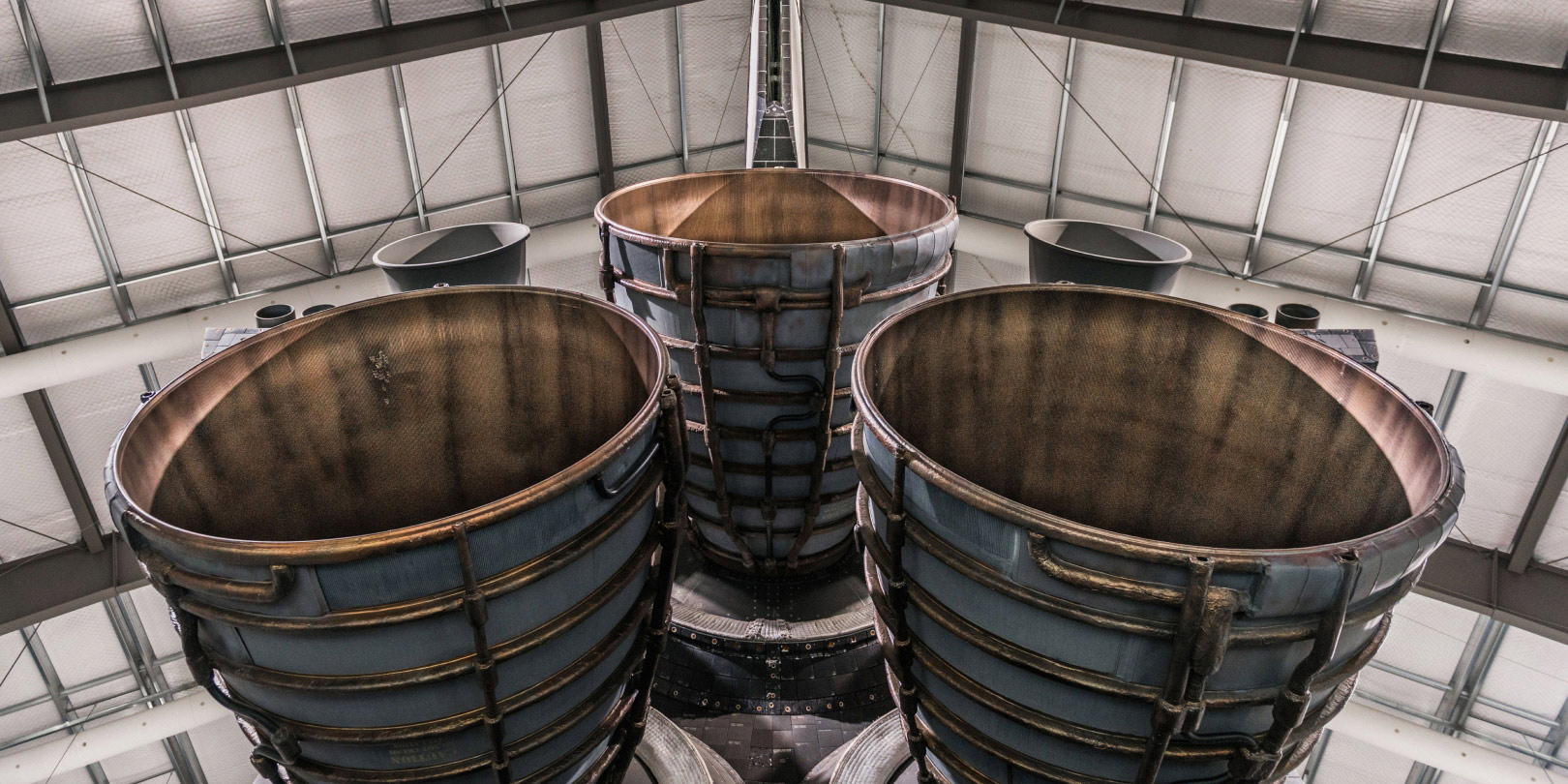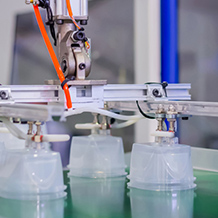
Smart story
Going back to basics for space exploration
A conversation with Casey Dollinger, manager Deloitte Consulting
How many people does it take to build a rocket engine? That's a question Casey Dollinger, a manager with Deloitte Consulting, is helping an aerospace manufacturer answer by harnessing the power of The Smart Factory by Deloitte @ Wichita's experiential center. And turns out, the answer isn't as simple as it seems.
What started as a crew planning supply chain project quickly turned into a larger smart operations initiative that's reconfiguring the manufacturer's processes to improve resource and material planning and increase the delivery of mission-capable products. Project Sky is a go for launch.
“They have some of the most advanced technology and
machines in their factories. They're just missing some of the basics.”
— Casey Dollinger
Manager, Deloitte Consulting
Seeing the big picture
Building rocket engines for space travel is a complicated matter. It involves some of the most advanced technology on the market—and off the market, considering many of the companies in this industry use homegrown systems as a competitive advantage.
But homegrown systems can be difficult to tie new technologies into, often with manual workarounds that result in limited access to data and smart analytics. In addition to using a homegrown system, the aerospace manufacturer lacked both a Material Requirements Planning (MRP) system and an Enterprise Resource Planning (ERP) system, which meant there was little visibility into the bigger picture.
Just recently, at The Smart Factory @ Wichita, we helped the aerospace manufacturer's operations scheduling team explore a use case and provide speed to value of an automated tool that delivers a forecast on its engine production. This was the first time the manufacturer could provide a forecast to its CEO after years of production.
That's just one way The Smart Factory @ Wichita experiential center is helping the aerospace manufacturer envision what's possible. With the live production line, we can also show the impact of an end-to-end transformation and bring new opportunities to life while the manufacturer better defines its goals.
The big issue to solve: How can we help optimize the manufacturer's operations while the company continues to iterate and grow at an incredibly rapid pace?
Launching a partnership
To go big, you have to start small. “Now that they're growing and trying to scale production, it's clear many of their processes are not scalable. Many solutions were executed manually and outside the enterprise system,” says Dollinger. To ensure the manufacturer's new rockets and engines operate at capacity and can be produced at scale, we're looking at the end-to-end business processes, from engineering to manufacturing. “Engineering and planning don't have a systematic link to manufacturing objects nor a visible digital thread to what's happening on the factory floor, which leads to many of their challenges,” says Dollinger.
This digital thread component is key for the aerospace manufacturer and one of the primary use cases we bring to life at The Smart Factory @ Wichita. True to many startups, the manufacturer's solutions are often created in silos and do not work together. Dollinger says, “Now that they're trying to ramp up engine production, it's hard to get to their goal production rate because nothing is connected.” Innovation requires communication, and when we host organizations atThe Smart Factory by Deloitte @ Wichita, we take a step back to address the fundamentals first.
“They're trying to build something that's never been built
before. They're very empowered to be innovative and shoot for the stars, which drives a very creative
culture.”
— Casey Dollinger
Manager, Deloitte Consulting
Shooting for the stars
Once we get the basics down in terms of processes, we look forward to helping the aerospace manufacturer integrate its technology into each build, inputting sensors and adding real-time data to create a true smart factory. “Long-term, it's getting onto the shop floor with them and helping them work more efficiently once they have the correct information being captured upstream,” says Dollinger.
We are also working with Deloitte's Human Capital group to help manage and drive the manufacturer's organizational change. “A lot of projects are born from an entrepreneurial spirit, but they don't have the organizational change management to communicate those new solutions,” says Dollinger. We're helping bring awareness to these new programs and breaking down internal silos, while giving the client a competitive advantage moving forward.
It's thrilling to work with a company that literally shoots for the stars. Possibilities are everywhere, transformation is a baseline expectation. Where will this journey take us next? The sky (and beyond) is the limit.

